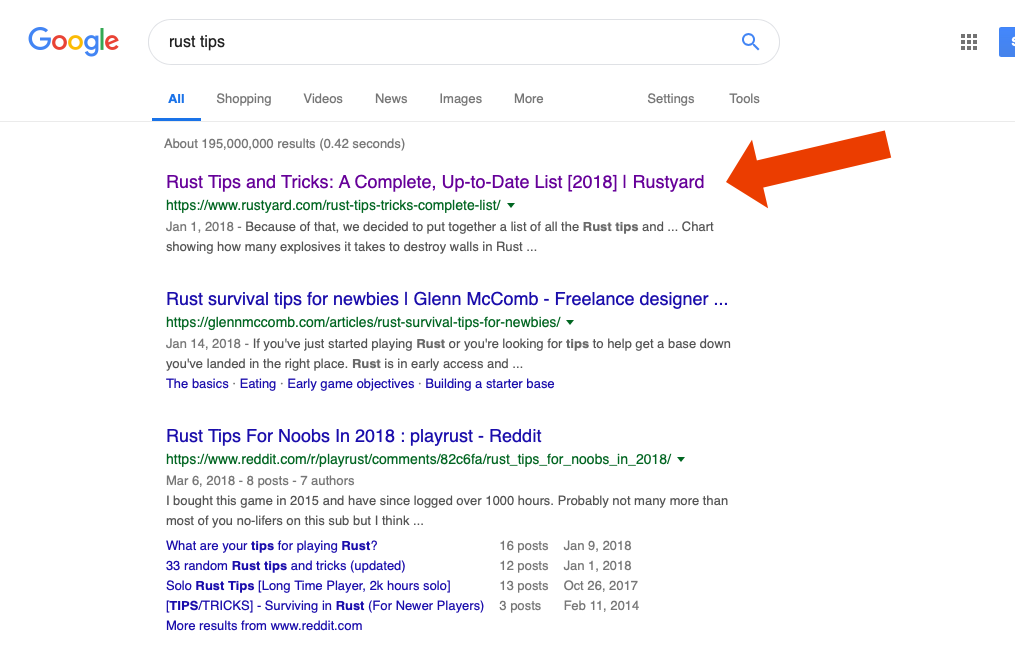There are no silver bullets in business. Few true “growth hacks” exist, and by the time you hear about them, they’re long past their expiration date. Rather, progress is usually slow, and victories hard fought.
That said, general principles do exist when it comes to growing a business: some timeless, others timely. This article has a few of the ones I’ve been lucky enough to stumble across, both during my time as an advertising agency owner and as the CMO/co-owner of one of the fastest growing HVAC businesses in the U.S. I offer one caveat — few, if any of the following are eyebrow raisers. In fact, most are pretty obvious. What is unusual is the degree to which companies I’ve worked for or with follow them. Without exception, the greater the faithfulness, the more successful the company.
Something to keep in mind as you read.
1. At the end of the day, everything hinges on whether you have the consumer’s best interest at heart. I know, it sounds like a Sunday school lesson, but it’s true. Companies that truly want to serve the consumer seem to almost always win in the end, both locally and worldwide. Because in the end, the consumer is the only boss that counts. Sam Walton said it best:
“There is only one boss. The customer. And he can fire everybody in the company from the chairman on down, simply by spending his money somewhere else.”
2. Make your ads/posts/emails/etc readable. I originally wrote this section as an opinion piece, but I decided actual results from readability studies would be more impactful. Here we go:
Regular vs reverse type
-
Text printed black on white: 70% stated good comprehension
-
Text printed white on black (reverse type): 0% stated good comprehension
Lower case vs all caps body copy
-
Lower case: 92% stated good comprehension
-
Capitals: 69% stated good comprehension
White vs. colored background
-
Black font on white background: 70% stated good comprehension
-
Black font on light grey background: 63% stated good comprehension
-
Black font on grey background: 33% stated good comprehension
Takeaways:
-
Don’t design in reverse type (white letters on a black background). In fact, now that you know better, mourn for the money wasted every time you encounter reverse type in the wild.
-
Don’t write body copy in all capitals
-
Colored backgrounds can be used, as long as there is strong contrast with the font color
All of these studies come from the book Type & Layout. Highly recommended to anyone working in communications.
While we’re on the subject of readability, speak in simple terms. Big words confuse people, as David Ogilvy put it memorably in his book, Ogilvy on Advertising:
“I once used the word OBSOLETE in a headline, only to discover that 43% of housewives had no idea what it meant. In another headline, I used the word INEFFABLE, only to discover that I didn’t know what it meant myself.”
Make your communications easy to read and you’ll increase your audience dramatically, at no extra cost.
3. Facebook “lead generation” campaigns are fantastic. If you’re the type of business that needs leads to grow, Facebook lead gen campaigns are worth a look. Every time I’ve tested them against the typical ad to landing page flow, they’ve been dramatically more effective. To give you an actual example, here’s the current cost per lead for a nationwide mass tort campaign I’ve been running the last few weeks:
Facebook lead gen CPL: $31
Facebook ad to landing page CPL: $59
For those doing the math at home, the lead gen campaign gets leads for 47% cheaper (and they convert roughly the same). Do yourself a favor and try it for yourself next go ‘round.
4. If your product sucks, don’t pay to advertise it. Good advertising will kill a bad product quicker, because it will get more people to try it. Only pay to advertise once you’ve got your product nailed down and your customers love it. Otherwise, the virality that advertising tends to spawn will die off quickly.
5. SEO is powerful — but rarely done right. Search engine optimization (SEO) allows your business to get free traffic from people who are interested in your product or service. Sounds great, right? Well, there’s a few catches: it’s hard to do, competitive, and takes a long time to pay off. It’s also near impossible to find an SEO expert who actually knows what they’re doing.
My advice? Learn it yourself. It’s a lot of fun and you can add a tremendous amount of value to your business with it. Personally, I learned by reading blogs like Moz and Ahrefs, studying websites that ranked well on Google, and finally, by creating a blog based around a favorite video game of mine called Rust. I saw it as kind of my graduate level SEO course. A few months and a lot of hard work later, I had one of the top ranked Rust websites on the internet:
One of the top keywords for Rustyard.com (video results removed)
Spend the time to learn SEO and you’ll have a leg up on your competitors for life.
6. Go after the widest possible audience of potential purchasers of your product or service. If you own a pizza parlor, forget the idea of somehow just targeting people who eats tons of pizza. Studies actually show the opposite: that most growth comes from increasing “casual” users’ consumption of your product.
I’ll illustrate this with a brand everyone is familiar with: Coca-Cola. How many Cokes would you guess the typical Coke customer buys a year? 365 — one every day? 52 — one every week? Nope — try two a year. So Coke’s biggest growth opportunity is simply increasing the typical Coke buyers annual purchase rate from two to three. Suddenly, their huge advertising budgets start to make sense.
For more on this topic, I highly recommend reading “How Brands Grow” by Byron Sharp (especially if you’re skeptical of the above Coke statistic).
7. Google Adwords (now Google Ads) campaigns tend to have the highest short-term ROI. Why? Well, with most advertising you’re pitching to people who have no need of your product at this very moment. With Adwords, you’re advertising to people who are already looking for what you offer — you just need to show up with the right sales pitch. In my experience, this leads to an excellent return on advertising spend (ROAS).
A word of caution though: advertising on Adwords is highly competitive, complicated, and can get expensive quick. Either do it right, or stick to handing out flyers because you’ll end up having to sell the family farm. This article is a great way to get started learning it.
8. Just because something isn’t easily trackable, doesn’t mean it’s not worth doing. As Albert Einstein allegedly once said: “Not everything that counts can be counted, and not everything that can be counted counts.” It’s true in science and it’s true in marketing. Despite the 21st century’s obsession with data, there always has been and always will be some element of faith in marketing. If you know your customer and you feel like a campaign you’ve got bouncing around in your head would influence more people to try your product, don’t let the fear of not being able to perfectly track it back to sales keep you from doing it.
A famous example is Clif Bar in the early 2000s ignoring most everyone’s advice to run a big TV ad campaign and instead pushing hard into event marketing to cyclists (which was near impossible for them to track). 10 years later, they’re estimated to be doing somewhere between $500 million and $1 billion in revenue.
9. Avoid lifestyle advertising. Unless you are in a lifestyle category (soda, alcohol, fashion, etc), keep your advertising functional. By that I mean sell hard benefits to the consumer like low prices or superior quality.
A lot of companies get into trouble by thinking that the consumer cares more about them than they actually do. The vast majority of the time, the consumer doesn’t give two flips about you or your company. In my opinion, it’s wiser to be like Claude Hopkins and believe the consumer is 100% selfish and is only going to use your company to get what they want, at the lowest possible price.
A good example is the industry I’m in, heating and air conditioning. As much as I’d love to believe people sit at home thinking about Franklin Heating & Air’s low prices and pretty red colors, the reality is they don’t. They care about us at most once or twice a year, when their HVAC system breaks. And you know what? That’s just fine.
10. Test everything. And I mean everything. In my experience, the best way to improve your marketing results is to continually test your ads/posts/messaging/etc against each other.
To do that, you first have to pick a meaningful metric to track. Sales generated is obviously the best metric, but you won’t always be able to perfectly tie it back to what you’re doing. And oftentimes you don’t need to. For example, an Adwords ad is best measured by it’s clickthrough rate, which works just fine. CTR is a great metric for that use case because it encompasses everything about the ad and allows easy comparison to other ads.
Don’t stop at the obvious stuff like paid ads either. In the past, I’ve tested everything from website headlines, landing page body copy, and even my little footer at the bottom of this page. If you relentlessly test your customer facing assets, you WILL improve your results.
11. Unless you have a big idea, your campaign will pass like a ship in the night. That’s an old David Ogilvy quote, but it’s true. Humans tend to ignore things they’ve seen before. It takes great skill and creativity to draw a busy consumer’s attention towards your product or service. So don’t be afraid to do something abnormal, particularly if you’re competing against industry giants.
At the same time, don’t make a fool of yourself for attention’s sake. As legendary adman Bill Bernbach used to say, you can get anyone’s attention by running an ad featuring a man glued to the ceiling, but you should only do that if you’re selling glue.
12. Fail cheaply. Growing a business is hard. If it was easy, everyone would have their own little island in the Caribbean, Richard Branson style:
Wouldn’t that be nice?
The high likelihood of failure for any given campaign is why you have to always be thinking on how you can de-risk your growth experiments. P&G wrote the book on this in the early 1900s. They started each marketing campaign by first carefully testing it in small cities or regions of the U.S. If it performed well, they rolled it out nationwide. If it didn’t, they either fixed it and tried again, or abandoned it. That methodical marketing process has saved P&G millions (if not billions) over the years and allowed them to grow into one of the largest companies in the world.
You can do the same thing with your business. Before running a $15,000 Facebook campaign, test a $50 one. If it fails, improve it and run it again. Rinse and repeat. Apply that principle to all your marketing and then watch your ROI shoot through the roof.
Hungry for more? Check out any or all of the books below. I would consider each of them a marketing “must-read”.
How Brands Grow
Reality in Advertising
Confessions of an Advertising Man
The Man Who Sold America
Ogilvy on Advertising
My Life in Advertising / Scientific Advertising
Will is co-founder of local HVAC company Franklin Heating & Air. For $19 service calls, free second opinions, and more, call (479) 282-0003 or visit www.savewithfranklin.com.
Live in Northwest Arkansas? Check out Franklin’s blog post on Northwest Arkansas utility rebates.



